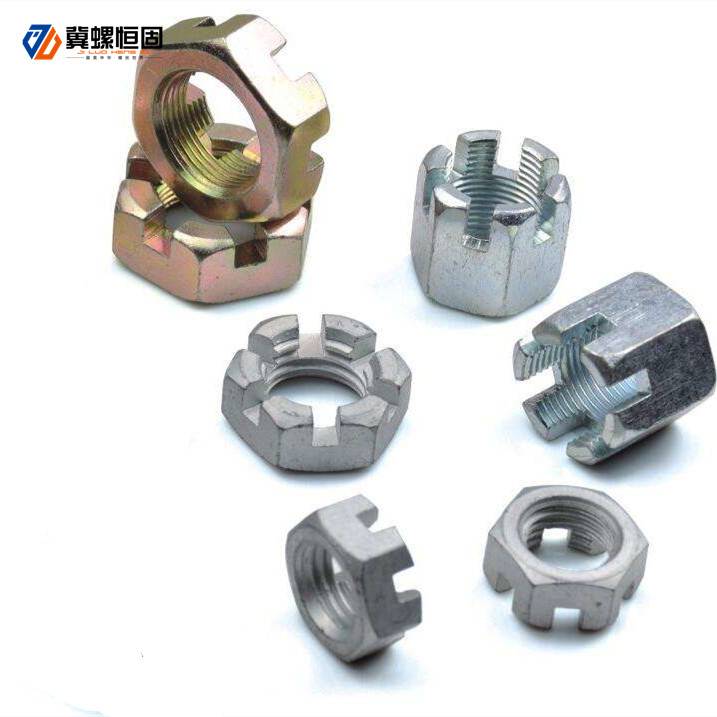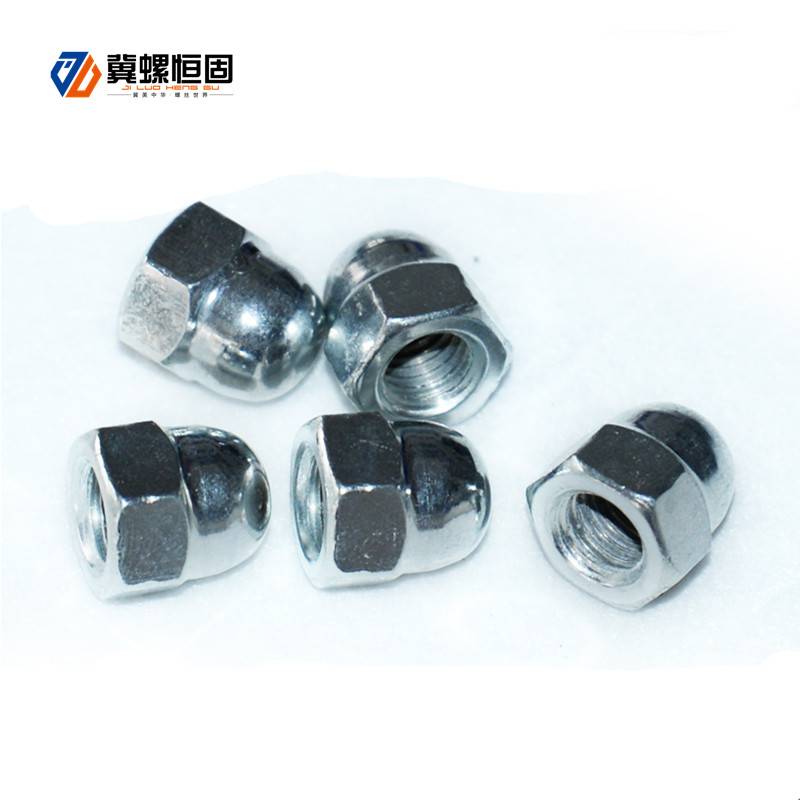Lock Nuts
USE:No oxidation rust compared with ordinary hexagon carbon steel nuts
Product Name |
handan yongnian hardware factory DIN985 M12 carbon steel hexagon nylon lock nut |
Material |
Carbon Steel/stainless steel/alloy steel/etc |
Size |
M4-M36 or non-standard as request&design |
Standard |
DIN,GB,ISO,JIS,BA, ANSI/ASTM, |
Grade |
SUS201, SUS304, SUS316, A2-70, A2-80, A4-80, 4 6 8 10 12 |
Length |
Standard or as request&design |
Thread |
Standard or as request&design |
Surface |
Plain, black, galvanized, etc |
lock nuts are common fastening anti-loosening nuts. It includes mechanical anti-loosening, riveting anti-loosening, friction anti-loosening, structural anti-loosening and so on.
Anti-loosening nuts ,which are tightened together with bolts . All manufacturing machinery must use this kind of parts that connects mechanical equipment through internal threads and the same specifications of anti-loosening nuts and bolts, tightly. Here are four ways to avoid loosening of anti-loosening nuts as follows:
Mechanical loosening prevention
Locking nut stop directly restricts nut rotation. Such as the use of hoist pins, series steel wire and stop washer. Since there is no pre-tightening force on the locking nut stop, the anti-loosening stop can only work when the locking nut loosens back to the stop position. Therefore,this locking nut is not to prevent loosening in practice, but to avoid falling.
Riveting and punching prevention
After tightening, punching point, welding, bonding and other methods are adopted to make the locking nut pair lose the characteristics of the side motion and become an irremovable connection. The defect of this method is that the bolt can only be used once, and the disassembly is very difficult. The bolt must be destroyed before it can be disassembled.
Friction prevention
This is the most widely used anti-loosening method, which produces a positive pressure between the side nut that does not change with the external force, to produce a friction that can prevent the relative rotation of the side nut. This positive pressure can be accomplished by pressing the nut in both directions, either axially or simultaneously. For example, elastic washers,double nuts, self-locking nuts and insert locking nuts.
Structural loosening prevention
The structure of locking nut is used, that is, the loosening prevention method of Tang thread.
Punching edge to prevent loosening
After tightening the nut, the thread is destroyed at the punching point at the end of the thread. Anaerobic adhesive is usually applied on the screw surface to prevent loosening. After tightening the anti-loosening nut, the adhesive can solidify itself, and the anti-loosening effect is good. The disadvantage of this method is that the bolt can only be used once, and the disassembly is very difficult. The bolt pair must be destroyed before it can be disassembled.
Three advantages of loosening nut:
First, the superior anti-vibration performance: when the thread is tightened, the top thread of the bolt tightly enters the 30 degree wedge inclined plane of the nut and is clamped, and the normal force exerted on the wedge inclined plane is 60 degree inclined to the axis of the bolt, rather than 30 degree inclined angle. Therefore, the normal force produced by the anti-loosening nut is far greater than that of the ordinary standard nut, which has a great anti-loosening effect.
Secondly, it has strong wear resistance and shear resistance: the 30 degree inclined bottom of the nut thread can make the locking force evenly distributed on all the threads of all teeth. Because the pressure distribution on each thread surface is uniform, it can solve the problem of thread wear and shear deformation better.
Thirdly, the reusability performance is good: extensive use shows that after repeated tightening and disassembly, the locking force of the anti-loosening nut remains unchanged and maintain the original locking effect.









